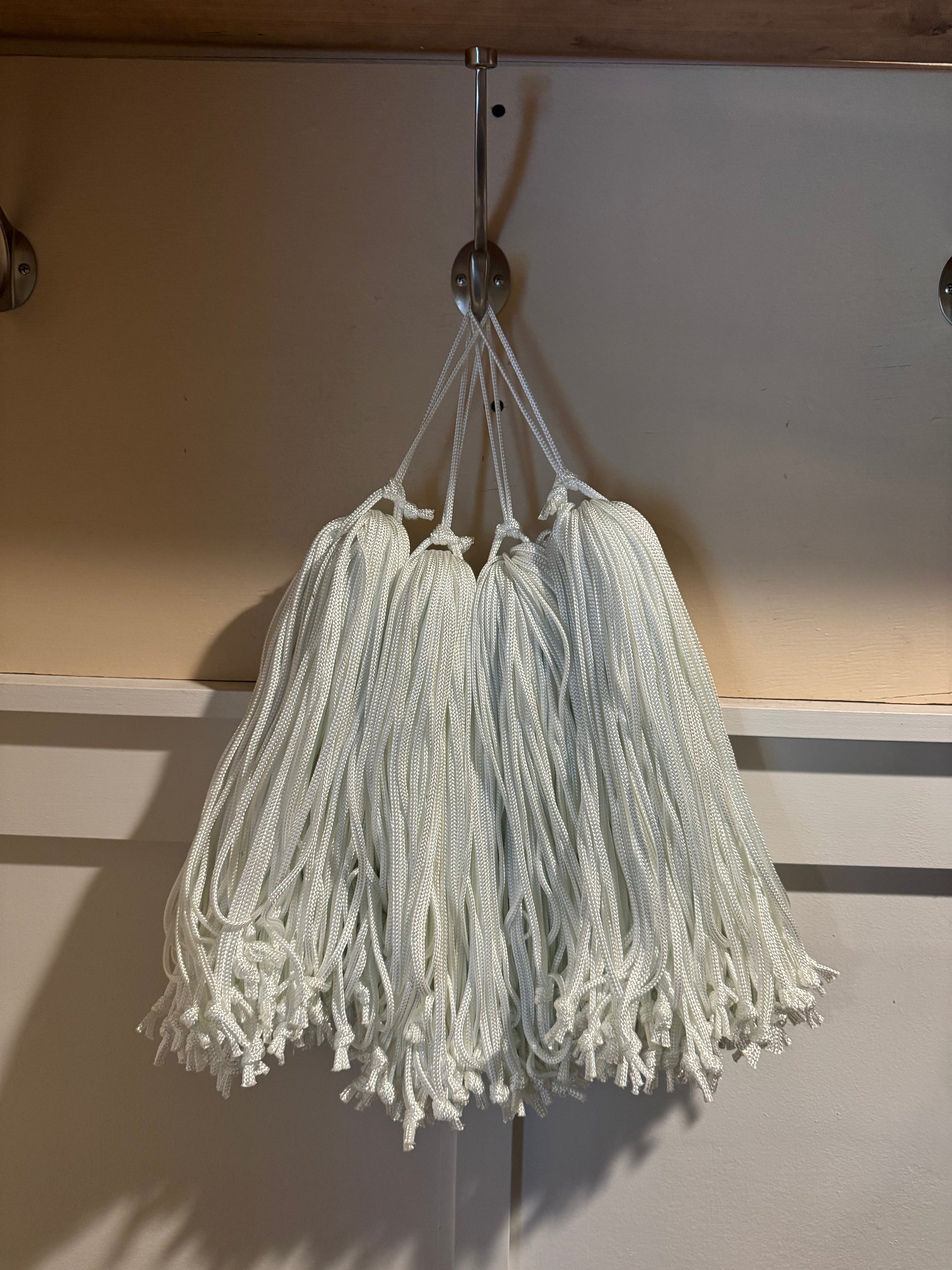this article was written by Molly Ekstrom, Commercial Fisherman Wife/Mom in Alaska
Everyone loves the dramatic footage — the pots loaded with crab coming over the rail, waves crashing over the bow, or the crew elbow-deep in halibut. But the truth is, the real work of commercial fishing doesn’t always happen in the chaos. It lives in the quiet, repetitive, often overlooked tasks that keep the entire operation running.
As the wife of an Alaskan fisherman, I’ve spent plenty of time on the boat myself. And now that I’m shoreside raising our daughter, I’ve found new ways to contribute — like tying gangions, a task that may sound small but is essential to our success on the water.
So, what is a gangion?
A gangion (pronounced “gan-jin”) is a short piece of fishing line with a hook on the end. It connects to the ground line—the main line used in longline fishing for halibut. Gangions are attached at regular intervals, each holding bait to attract fish.
Our longline gear is broken into sections called skates. Each skate is about 150 fathoms (900 feet) long and holds 75 gangions. A single fishing set can include 10 to 50 skates, meaning hundreds — even thousands — of gangions are needed every trip.
A simple knot, a huge impact
Tying gangions isn’t complicated. It takes just a quick overhand knot. But when you're tying hundreds at a time, the task becomes a true exercise in patience and consistency.
On the boat, everyone pitches in — each crew member ties a bundle of 100 gangions during their night wheel watch. I used to tie mine during bad weather days while watching a movie in the galley, or while prepping meals for the crew. Even when we weren’t actively fishing, there was always something to do.
Now, from home, I’m still tying gangions — just in a different setting. Before my husband left for the season, I filled our diaper bag with untied bundles. I tie them during naptime, while our baby sleeps on my chest or practices sitting up nearby. It’s not glamorous, but it’s one small way I stay connected to the work and support our family’s livelihood.
Why gangions matter
Gangions don’t just get tied once and forgotten. They wear down and break over time, especially in the harsh marine environment. Each gangion is inspected before baiting. If it’s frayed or damaged, it’s swapped out — fast. No one wants to lose a fish to a faulty line.
Replacing gangions ensures our gear is strong, our sets are effective, and that we’re fishing as efficiently (and responsibly) as possible. It’s one of the many behind-the-scenes jobs that never makes the highlight reel — but it’s the backbone of the operation.
The heart of the work
This is what people rarely see about commercial fishing. It’s not just about hauling gear and braving storms. It’s about preparation, maintenance, and the quiet effort behind every successful set.
Tying gangions has become a symbol of that for me — a small but mighty task that connects my life on land with the life we’ve built at sea. And one day, I hope our daughter will tie her first gangion and feel that same sense of purpose and pride.
Want to see more behind-the-scenes stories from life in a fishing family? Follow along on the Premier Catch Blog or sign up for our emails to get a closer look at the people and work behind the wild seafood we deliver to your door.


